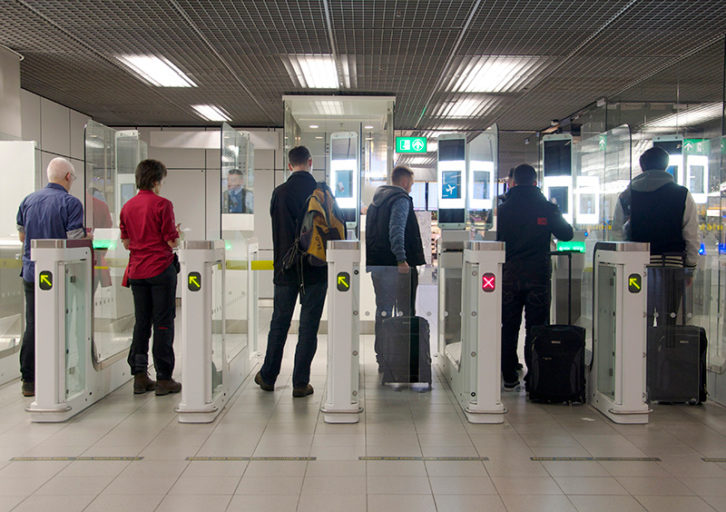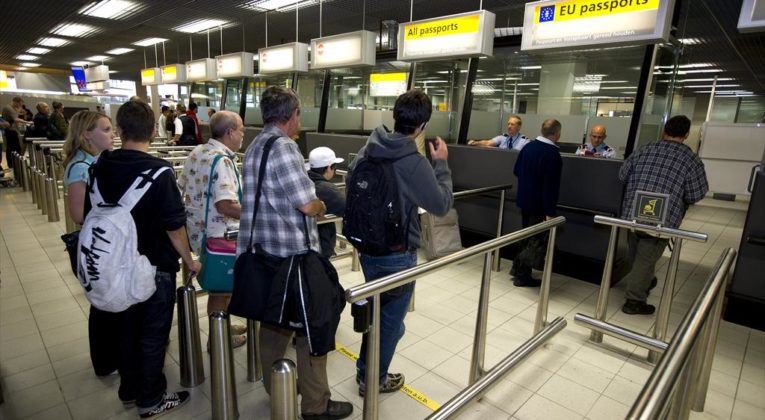Voor sommige links naar producten en partners op deze website krijgen wij een affiliate commissie.
Stricter border checks for Europe
Recent crises have underlined the need for stricter border checks and better border management in Europe. Therefore, the European Commission introduced a smart borders package in recent years, which includes several proposals. The most important proposals are listed below.
Entry-Exit system
The Schengen area is formed by 26 European countries. Out of these 26 countries 4 countries are not a member of the EU (Iceland, Norway, Switzerland and Liechtenstein). Foreigners entering the Schengen area are checked at the border. Checks are done through several databases and border agents monitor authorised stays by calculating stamps. Foreign travellers are usually only allowed to stay for 90 calendar days in any 180-day period.
Currently, these checks systematically occur upon entry into Schengen, but not when leaving it. The European Commission announced in 2013 to implement one EU-wide Entry-Exit System (EES), where travellers will have to scan their fingerprints and passports when they enter and leave the Schengen area. This results in the ability to electronically track one’s days in the territory, as well as being able to check the databases automatically.

Registered travellers program
There are more than 700 million border crossings at Schengen border posts every year, and the number increases on an annual basis. The Commission proposes the implementation of technology that would enable a complete automation of border crossings. This would save 25% of border inspectors’ time and should decrease waiting time for travellers, since automated border checks would only take 20 to 40 seconds.
Travellers enrolling in the registered travellers program (RTP) would be issued a card with a unique identifier (application number). At the gate, the traveller would swipe the card (on arrival and departure), at which point the card, travel documentation (visa sticker number, if applicable), and fingerprints are read. The traveller can then proceed through the gate.
European travel information and authorisation system
The Schengen area is the most welcoming territory in the world, with 1.4 billion people from 60 countries benefiting from visa-exempt travel. However, year after year, almost 300,000 people are refused entry at the border. Mainly due to a negative migration assessment or security risk. Such cases will be processed before going through the European travel information and authorisation system (ETIAS).
ETIAS is similar to the ESTA in the United States. Foreigners who do not require a visa will need to log onto a website and provide basic information, such as name, passport number, occupation, and background information (e.g., contagious diseases, criminal records, presence in war zones, etc.). All of this information is then checked across several databases. And in the case of a “no-hit” (i.e., if there are no “red flags”), the traveller receives an approval email. The carrier will check the ETIAS approval before on-boarding and the border guard will check the ETIAS, allowing the traveller to proceed. The fee for the application is expected to be EUR 5 per application. This is cheaper compared to the ESTA application fee of USD 14 that is needed to enter the United States.

Current status
The European Commission has discussed several border-management proposals. The European Parliament is now clarifying their positions (or have clarified it) with respect to these proposals. Once clarified, these proposals will go through a trilogue procedure, whereby the European Commission, Parliament, and Council negotiate towards one mutually accepted regulation.
Frequent travellers to the EU will benefit in the future when they enroll in the registered travellers program. This system should speed up the border-crossing process.






Geef een reactie